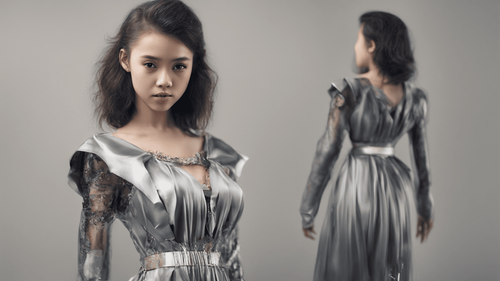
Introduction: Embracing the Future of Visual Creativity
In a world where innovation knows no bounds, the emergence of AI generation images has sparked a new era of visual content creation. As technology advances at an unprecedented pace, the fusion of artificial intelligence and image generation has paved the way for remarkable transformations in various industries. From marketing and design to entertainment and beyond, AI-generated images are making a significant impact, pushing creative boundaries and redefining artistic possibilities.
AI Generation Images: Unveiling the Concept
AI generation images, often referred to as AI-generated images, are visuals that are crafted by computer algorithms using complex patterns, data analysis, and machine learning techniques. These algorithms can mimic human creativity and artistic flair, resulting in images that are both captivating and thought-provoking. The process involves training AI models on vast datasets of existing images, enabling them to learn and replicate diverse artistic styles, compositions, and subject matters.
The Inner Workings of AI Image Generation
Deep Learning Architectures: The Building Blocks of AI Images
The heart and soul of AI image generation lie in deep learning architectures, particularly Generative Adversarial Networks (GANs) and Variational Autoencoders (VAEs). GANs consist of two neural networks – a generator and a discriminator – engaged in a creative duel. The generator crafts images, aiming to deceive the discriminator, while the discriminator's role is to distinguish between real and AI-generated images. This tug-of-war leads to the refinement of AI-generated visuals over time.
Training on Diverse Datasets: Fueling Creativity through Data
For AI models to produce astonishing images, they must first be exposed to a diverse array of visual data. Training datasets encompass a vast collection of images, styles, and themes, allowing AI algorithms to grasp the nuances of human creativity. From classical art to contemporary photography, the amalgamation of data fuels the AI's ability to generate images that resonate with human aesthetics.
Style Transfer: Infusing Artistic Flair
Style transfer techniques further enhance AI-generated images by infusing them with distinctive artistic styles. By leveraging Convolutional Neural Networks (CNNs) and intricate optimization processes, AI models can transform ordinary images into mesmerizing pieces of art reminiscent of renowned painters or iconic art movements.
Applications of AI Generation Images
AI-generated images transcend traditional boundaries and find their way into various industries, opening up exciting opportunities for innovation and creativity.
Marketing and Advertising: Captivating Visual Campaigns
In the realm of marketing, AI-generated images are becoming invaluable assets for creating captivating visual campaigns. Brands can harness AI to craft attention-grabbing advertisements, striking social media visuals, and personalized content that resonates with their target audiences.
Design and Creativity: Pushing Artistic Limits
Designers and artists are embracing AI-generated images to explore uncharted territories of creativity. By collaborating with AI algorithms, they can create novel designs, avant-garde illustrations, and multimedia installations that blend human ingenuity with machine-generated innovation.
Entertainment and Gaming: Immersive Experiences
The entertainment industry is undergoing a profound transformation with the integration of AI-generated images. In video games, AI can generate lifelike characters, intricate landscapes, and dynamic animations, enhancing players' immersion and gaming experiences.
Fashion and Beauty: Redefining Trends
AI-generated images are making waves in the fashion and beauty sectors. Fashion designers can experiment with AI to conceptualize unique clothing designs, while beauty brands can simulate makeup looks on virtual canvases, revolutionizing the way consumers explore and select products.
Architectural Visualization: Bridging Imagination and Reality
Architects and urban planners are utilizing AI-generated images to bring architectural visions to life. AI can generate realistic renderings of buildings, interiors, and urban landscapes, providing stakeholders with vivid visualizations before a single brick is laid.
The Future: Navigating the Horizons of AI Generation Images
As AI generation images continue to evolve, the future holds boundless potential for their application and impact. Innovations in AI algorithms, hardware capabilities, and creative techniques will likely result in even more sophisticated and lifelike images, blurring the lines between human and AI-generated creativity.
FAQs About AI Generation Images
How does AI generate images that resemble human creativity?
AI generates images by learning from extensive datasets and applying complex algorithms that replicate patterns, styles, and compositions found in human-created visuals. This process allows AI to produce images that closely mimic human creativity.
Can AI-generated images replace human artists and designers?
AI-generated images complement human creativity rather than replacing it. While AI can produce impressive visuals, human artists bring unique emotions, experiences, and perspectives that contribute to the richness of artistic expression.
Are AI-generated images copyrighted?
The copyright status of AI-generated images can be complex. In some cases, the copyright may belong to the creator of the AI model, while in others, it could be attributed to the individual or organization that trained the model. Legal frameworks around AI-generated content are still evolving.
How can businesses integrate AI-generated images into their marketing strategies?
Businesses can incorporate AI-generated images into their marketing strategies by creating visually compelling advertisements, social media posts, and product visuals. AI-generated content can help capture and retain audience attention, leading to higher engagement and conversions.
What ethical considerations surround the use of AI-generated images?
The ethical use of AI-generated images raises questions about authenticity, misinformation, and potential biases. Striking a balance between creative exploration and responsible use is essential to ensure that AI-generated content respects ethical guidelines.
What role will AI-generated images play in education and learning?
AI-generated images have the potential to enhance educational materials by providing illustrative visuals, interactive simulations, and immersive learning experiences. Students can engage with complex concepts more effectively through visually rich content.
Conclusion
In the realm of visual content creation, AI generation images have emerged as a powerful force, reshaping creative landscapes and pushing the boundaries of artistic expression. Through the intricate interplay of algorithms, data, and human collaboration, AI-generated images showcase the extraordinary synergy between technology and creativity. As we embark on a future brimming with possibilities, the evolution of AI-generated images promises to captivate our senses, ignite our imagination, and usher in a new era of visual storytelling.